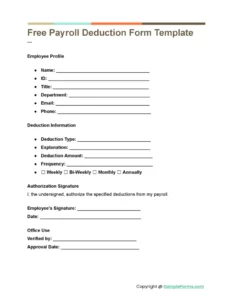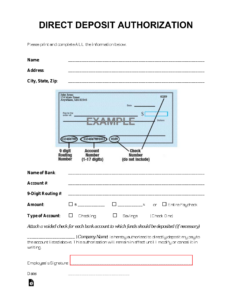A right to work policy is a law that prohibits unions from requiring employees to become members or pay union dues as a condition of employment. These policies are typically enacted by states in order to make it easier for businesses to attract and retain workers. Unions oppose right to work laws, arguing that they weaken unions and make it more difficult for workers to bargain collectively for better wages and benefits.
If you are an employer in a right to work state, it is important to have a clear and concise right to work policy in place. This policy should state that employees are not required to join a union or pay union dues as a condition of employment. The policy should also prohibit discrimination against employees who choose not to join a union. A sample right to work policy template is provided below.
What is a Right to Work Policy?
A right to work policy is a law that prohibits unions from requiring employees to become members or pay union dues as a condition of employment. These policies are typically enacted by states in order to make it easier for businesses to attract and retain workers. As of 2023, 27 states in the United States have right to work laws. These states are: Alabama, Arizona, Arkansas, Florida, Georgia, Idaho, Indiana, Iowa, Kansas, Kentucky, Louisiana, Michigan, Mississippi, Missouri, Nebraska, Nevada, North Carolina, North Dakota, Oklahoma, South Carolina, South Dakota, Tennessee, Texas, Utah, Virginia, West Virginia, and Wyoming.
Unions oppose right to work laws, arguing that they weaken unions and make it more difficult for workers to bargain collectively for better wages and benefits. They argue that right to work laws allow workers to free-ride on the benefits that unions negotiate, without having to pay their fair share of the costs. Unions also argue that right to work laws make it more difficult for them to organize workers and represent their interests.
Benefits of a Right to Work Policy
There are several benefits to having a right to work policy. These benefits include:
- Increased economic growth: Studies have shown that states with right to work laws have higher levels of economic growth than states without right to work laws. This is because businesses are more likely to invest in states where they can hire workers without having to worry about being forced to unionize.
- More jobs: Right to work laws create more jobs because businesses are more likely to hire workers in states where they can hire workers without having to worry about being forced to unionize.
- Higher wages: Right to work laws lead to higher wages for workers because businesses are more likely to compete for workers in states where they can hire workers without having to worry about being forced to unionize.
- More freedom for workers: Right to work laws give workers the freedom to choose whether or not they want to join a union. This freedom allows workers to make decisions that are in their best interests.
FAQ
What are the benefits of a right to work policy?
There are several benefits to having a right to work policy. These benefits include increased economic growth, more jobs, higher wages, and more freedom for workers.
What states have right to work laws?
As of 2023, 27 states in the United States have right to work laws. These states are: Alabama, Arizona, Arkansas, Florida, Georgia, Idaho, Indiana, Iowa, Kansas, Kentucky, Louisiana, Michigan, Mississippi, Missouri, Nebraska, Nevada, North Carolina, North Dakota, Oklahoma, South Carolina, South Dakota, Tennessee, Texas, Utah, Virginia, West Virginia, and Wyoming.
Are right to work laws constitutional?
Yes, right to work laws are constitutional. The Supreme Court has ruled that states have the right to enact right to work laws.

